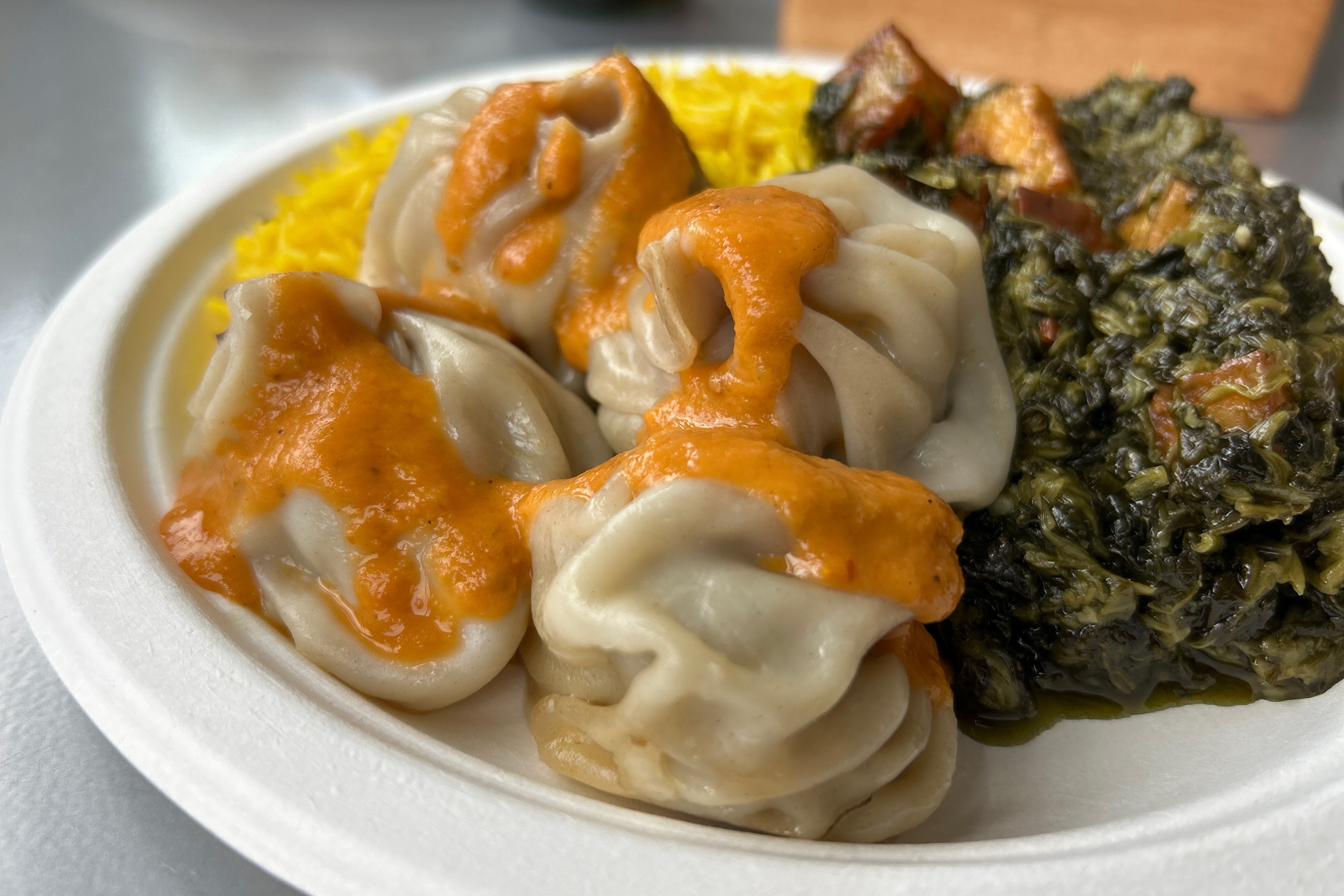In January, as the company does every year, Yelp compiled its users’ 100 favorite restaurants in America, and only one San Francisco restaurant made the list. The lone entry wasn’t Scoma’s, Swan Oyster Depot or San Tung. It was the somewhat nondescript Ocean Indian Cuisine on Geary Boulevard, in a part of the Richmond District best known for its Russian restaurants and Holy Virgin Cathedral’s bulbous onion domes.
In spite of the word “Indian,” Ocean Indian Cuisine is actually as much a Nepalese restaurant. Its interior is filled with framed photos of Mount Everest and Pashupatinath, a massive Hindu temple complex in Kathmandu, Nepal’s capital. As with Switzerland or Colorado, Nepalese identity is strongly tied to its massive mountains, but while most non-Nepalese Americans know where the Himalayas are, fewer are familiar with dal bhat (a lentil curry) or momos (steamed dumplings).
Across the Bay Area, the food of Nepal, a landlocked Asian country of 30 million people with the world’s only non-rectangular flag, can feel almost hidden in plain sight. Typically meat-forward and full-flavored, it’s often called “Himalayan” food—and indeed, Yelp’s own category for the cuisine is “Himalayan/Nepalese.” That is, when Nepal isn’t absorbed into its larger and better-known neighbors entirely.
“Nepalese food becomes Pakistani and Indian food, and that breaks my heart,” said Binita Pradhan, the owner of Bini’s Kitchen, a fast-casual Nepalese restaurant in SoMa famous for its lamb momos and for kwati, a kind of nine-bean Nepalese chili. She recognizes that tactical misrepresentation is done out of economic necessity, adding, “It’s survival for everybody right now. People are doing fusion cuisine, and it’s working.”
Using a more familiar descriptor is a tried-and-true tactic for restaurants. Helmand Palace, perhaps San Francisco’s oldest and best-known Afghani restaurant, bills itself as “Mediterranean,” even though that body of water is thousands of miles away from Afghanistan. It makes sense: Non-Afghanis may not be well-acquainted with dishes like banjan or kadoo, but they probably know kebabs, which are common to both places.
Of course, for Nepalese chefs and restaurateurs like Pradhan, who pride themselves on preparing their own spices, the blurred lines can be frustrating.
“Sometimes people come and ask, ‘Don’t you have samosas?’ And I look at them and say, ‘That’s Indian,’” she said.
Still, the community is there. Pradhan noted that right now, a large number of food-delivery drivers in San Francisco are Nepalese.
“I see a lot of DoorDash is picked up by Nepalese people,” she said. “They come in, and I see the name and speak to them, and they smile.”
A Post-Earthquake Influx
Pratibha Tekkey, the director of community organizing for the Tenderloin Housing Clinic, has observed an influx of Nepalese families into that neighborhood in recent years, along with places like Himalayan Pizza & Momo on Golden Gate Avenue.
“I used to work in Nepal when I was very young, for the United Nations, so I understand the culture and the language a little bit,” Tekkey said. “People are fleeing Nepal if they can, after the earthquake.”
That 2015 disaster brought devastation to Kathmandu, killing thousands in the city and causing an avalanche on Everest that took another 22 lives—the deadliest episode ever recorded on the world’s tallest peak. In the quake’s aftermath, tens of thousands of Nepalese emigrated. Many settled in the Bay Area, particularly El Cerrito and Albany, where Solano Avenue is filled with Nepalese restaurants and grocery stores.
San Francisco proper has a number of Nepalese or Himalayan restaurants, too. Beyond Bini’s Kitchen and Ocean Indian Cuisine, there’s Yarsa Nepalese Cuisine in North Beach, Himalayan Cuisine SF on Polk Street and Dancing Yak in the Mission District. At one point, Bernal Heights had two—Cuisine of Nepal on Mission Street and Little Nepal on Cortland Avenue—although the latter has since closed.
Elsewhere in the Mission, there are now two Nepalese restaurants within blocks of each other, the upscale Base Camp on 20th and Folsom streets, which organizes actual expeditions to the Himalayas, and the brand-new 14 Peaks on Bryant Street, in the space that was until recently known as Buttermilk Country Kitchen.
At 14 Peaks, the expansive menu includes fragrant dishes like sukuti (marinated bison with onions) and chicken choila as well as the requisite momos and chow mein—which, for all its association with Cantonese takeout, also happens to be a Nepalese street food staple. Proprietor Suman Gautam is particularly proud to serve a regional delicacy known as malekhu ko machha, or fried fish marinated in a special blend of spices and served with a spicy tomato sauce.
“It’s an appetizer that comes from a town in Nepal called Malekhu that is very famous,” Gautam said. “It’s a feast item. We have tried to bring that kind of taste here in San Francisco.”
